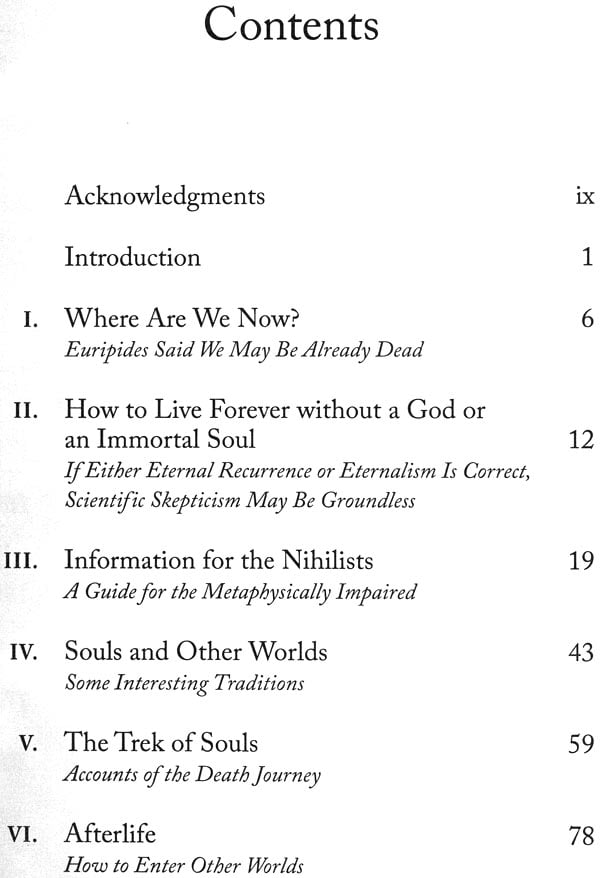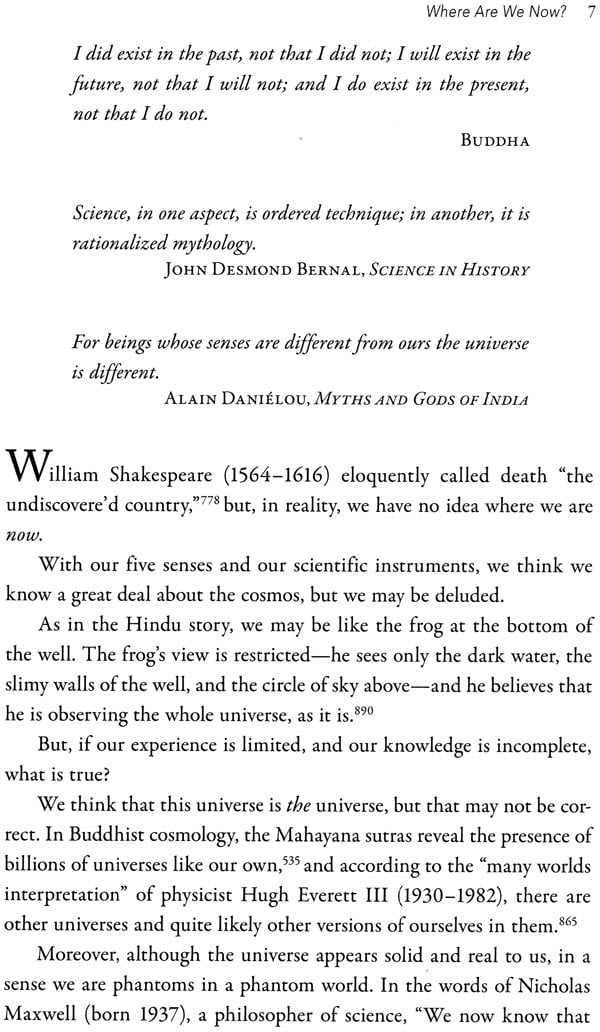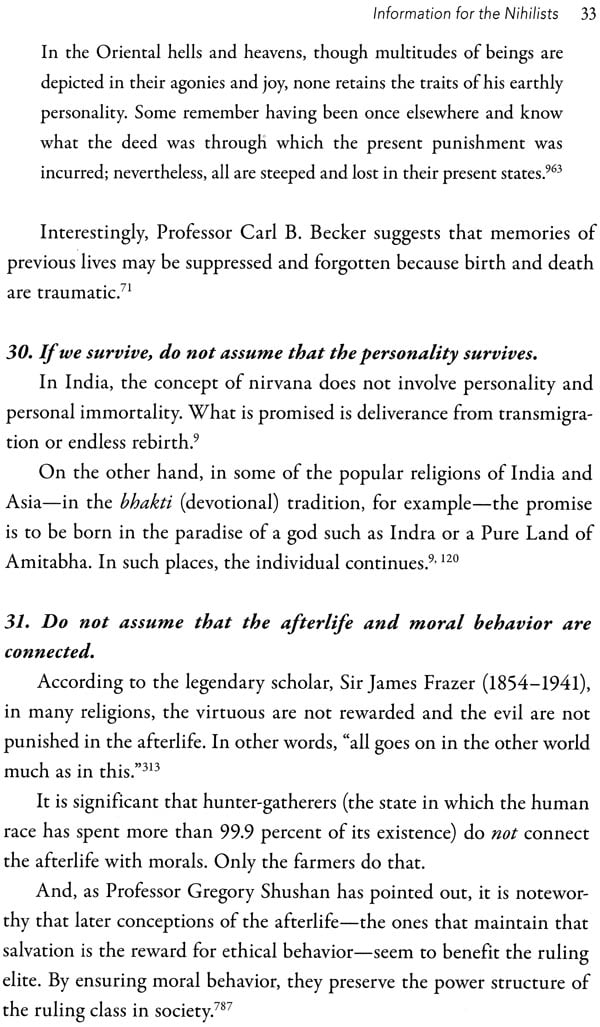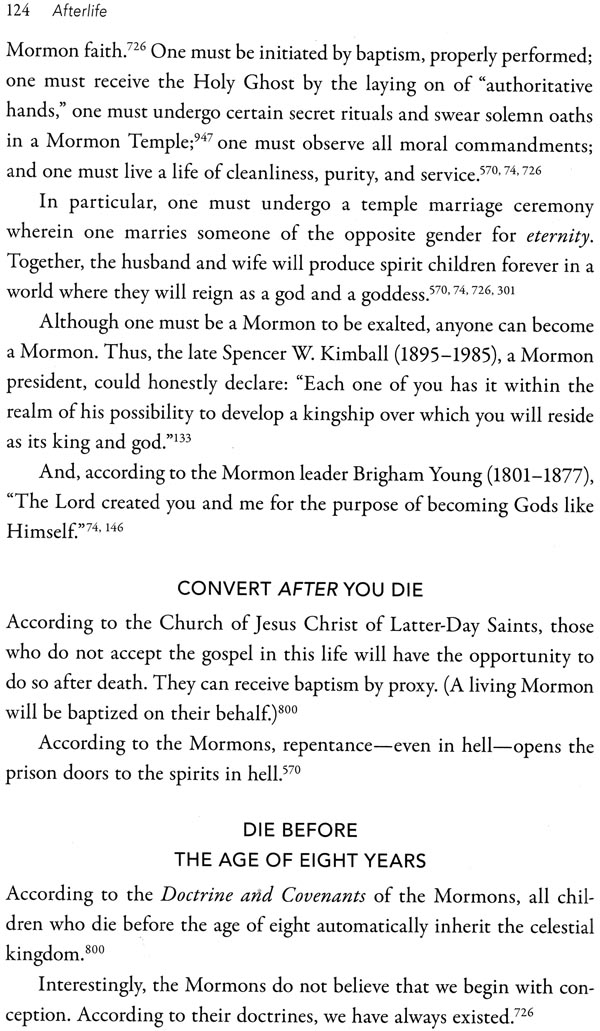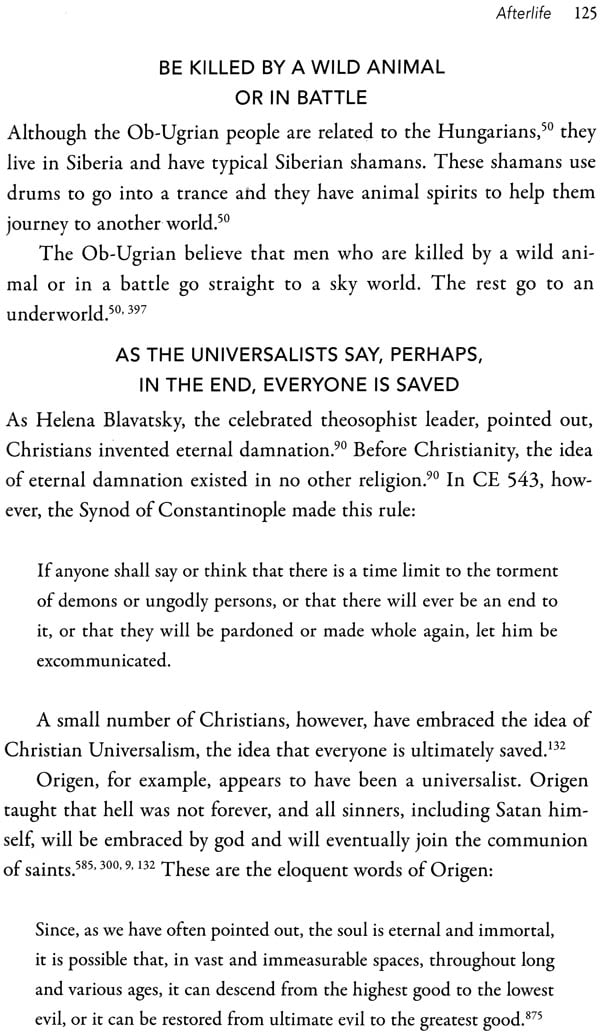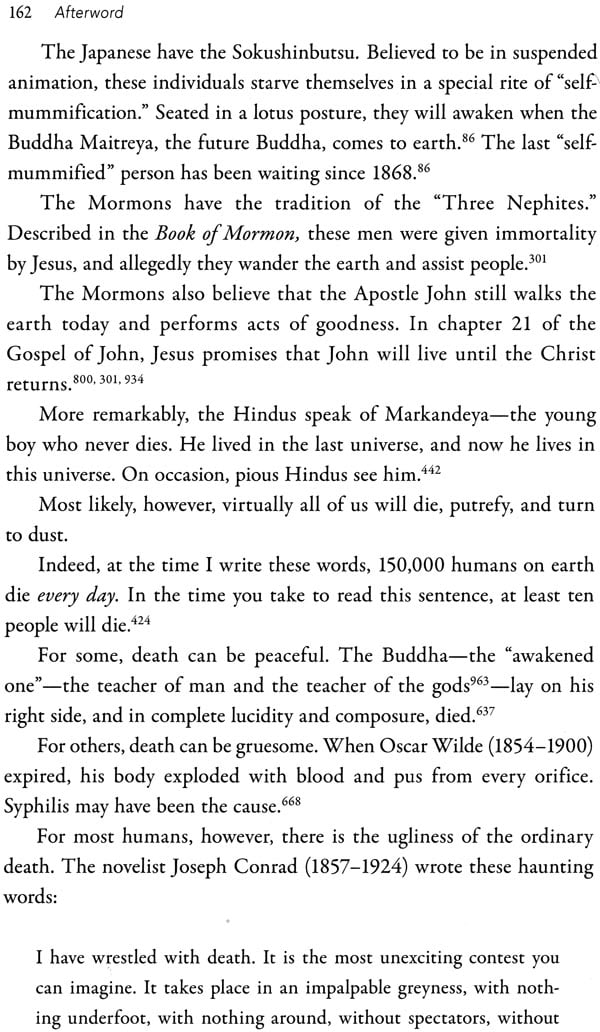
A Traveler's Guide to The Afterlife (Traditions Beliefs on Death, Dying and What Lies Beyond)
Book Specification
| Item Code: | NAR104 |
| Author: | Mark Mirabello, Ph.D. |
| Publisher: | Inner Traditions, Vermont |
| Language: | English |
| Edition: | 2016 |
| ISBN: | 9781620555972 |
| Pages: | 224 |
| Cover: | PAPERBACK |
| Other Details | 9.00 X 6.00 inch |
| Weight | 370 gm |
Book Description
Considering the question "What is death?" Mirabello provides answers from a wide range of ancient and modern thinkers, including scientist Nicholas Maxwell, the seer Emanuel Swedenborg, 1st-century Buddhist philosopher Nagarjuna, and Greek philosopher Euripides, who opined that we may already be dead and only dreaming we are alive. He explores the trek of the soul through life and death with firsthand accounts of the death journey and notes that what is perceived as death here may actually be life somewhere else. He reveals how, in many traditions, ethics and the afterlife are not connected and how an afterlife is possible even without is possible even without a god or a soul. Sharing evidence that consciousness is not simply a product of the brain, he offers a strong rebuttal to nihilists, materialists, and the Lokayata philosophical school of India who believe in the "finality" of death. He explains how spectres and ghosts are produced and offers techniques to communicate with the dead as well as instructions for an out-of-body experience and the complete procedure for a séance.
With an extensive bibliography of more than 900 sources, this guide offers comprehensive information on afterlife beliefs from the vast majority of cultures around the world and throughout history-a veritable "traveler’s guide" to the afterlife.
Sigmund Freud (1856-1939) made this observation: "It is indeed impossible to imagine our own death; and whenever we attempt to do so we can perceive that we are still present as spectators.
"317 I have tried to imagine myself dead. . . .
Perhaps, like a Brahmin priest, I am shrouded in silk, garlanded with flowers, drenched in clarified butter, and cremated on a pyre of scented wood until my skull explodes from the heat.
Or, perhaps, as the Marquis de Sade (1740-1814) requested, I am buried in the forest, the soft earth above me strewn with acorns.
Or, perhaps, like some of the tribal people in India, I am buried face down in a grave filled with thorns.
Or, perhaps, like a Tibetan Buddhist, I am given a "sky burial." My body is taken to a hill-top, chopped into pieces, and left for the birds to consume.
But, as Freud predicted, I cannot really imagine myself dead. I am presently stricken with cancer—I am surrounded by skulls and carrion flowers, the symbols of death—but I cannot really imagine myself dead.
So, this is not a book about death—about annihilation—to the contrary, it is a book about existence beyond death. It is about surviving the grisly decay of the grave.
In my opinion, a volume on death, a form of literary necrophilia, is informative but of finite value. A text on the afterworlds, however, is a torch that illuminates the great unknown. Moreover, information about the afterlife is valued by all responsible minds. As one Buddhist text makes clear, since death is virtually inevitable (even the Buddha died), to simply focus on enjoying life here is as misguided as a person who has fallen off a cliff deciding to enjoy his descent to earth.
With information, however, we can die without fear and without confusion.
SELECTED GUIDANCE
Imagine that this book is a treasure concealed in a lead casket. For special eyes only, the eyes of the adept, this slender volume is a guide—a breviary—for those who will one day cross the threshold of death.
Designed for the living and those yet unborn, it is a "traveler's guide" to other worlds. Many such books have been written before the Book of Going Forth by Day in venerable Egypt, the Katha Upanishad in mysterious India, the Bardo Thodol in fabled Tibet, the golden Orphic tablets in classical Greece, and Heaven and its Wonders and Hell: From Things Heard and Seen in eighteenth-century Europe—but this work is different. Unlike religious texts, this book has no scriptural pretensions.
As I researched this work, I focused on interesting or unusual concepts about the afterlife, and my aim was judicious selection rather than exhaustive coverage. Obviously, since approximately 3,500 known societies have existed on the earth—and many of these have distinctive ideas about the afterworld—some culling was necessary.
For the record, I have tried to avoid the idealistic twaddle of the pseudo-occultists, the boilerplate sermons of the established religions, the unadulterated bilge of self-proclaimed prophets, the ontological nonsense of the hack metaphysicians, and the smug nihilism of the scientific materialists.
I have no salvationist agenda. There are no dogmas here simply fragments of ideas—gathered from many cultures across time and space.
I share these fragments without certainty. Moreover, I share them with a certain amount of humility.
I am mindful of the fact that, according to Lao Tzu (flourished in the fifth or fourth century BCE), the distinguished sage who, according to legend, was born an old man, "Those who speak do not know; those who know do not speak."
A similar notion is found in the Upanishads, the great religious texts from India.
Nevertheless, I have written the book.
A WORD ON SOURCES
Like the terrifying Death's-Head Hawkmoth—with the skull pat-tern on its thorax and its weird melancholy cry, characteristics that inspired the Edgar Allan Poe story The Sphinx -I have raided many hives belonging to many different bees.
In other words, I have tried to examine the complete human experience.
Too many books focus on modern religions the great faiths and too many people view the arcane religions and mystery cults either as living relics or as dead anthropological curiosities.
But, the human race has spent most of its existence "grubbing, hunting, killing, feasting, mating, dying, and giving birth," and "civilization" is a relatively recent innovation." Indeed, as is well known, as recently as 1500 CE, only one-third of the inhabited world was "civilized"—the rest was pre-literate and tribal.
Besides, traditional peoples, such as hunters and nomads fierce people living under the sky and stalking great quadrupeds may have glimpsed the truth, so why ignore them?
Moreover, as Diodorus Siculus (flourished 30 BCE) reminds us in his Library of History, when truth is corrupted, and knowledge degenerates, remote "barbarian" people may preserve it unspoilt.
Of course, as the learned Professor Mircea Eliade (1907-1986) noted, ideas do not leave tangible fossils,' so it is difficult to determine what archaic people actually believed, but an attempt has been made.
A WORD TO THE SKEPTICS
In antiquity, so firm was the Celtic belief in an afterlife, wrote Pomponius Mela (died circa 45 CE), that "some even used to defer paying debts until their arrival in the next world."
But is immortality simply a childish dream?
To the contrary, immortals once dominated the earth. Indeed, for countless eons, there was no natural death on the planet.
Like the pagan gods of Odinism, these primordial immortals could be killed, but they did not "self-destruct in a programmed way" as humans do. They did not grow old and die.
Who were these immortals? Reproducing without sex, they exist to this day, and we call them bacteria. Some of them may be millions of years old. And they are incredibly common. In fact, between two and nine pounds of our weight is bacteria, mostly in our intestines.
Fantastically prolific, bacteria like E. coli (Escherichia coli) double their numbers every fifteen minutes, and if they all lived, in two days the "daughters of one E-coli would weigh as much as the human race." A few days later, they would outweigh all living things on earth. Soon, they would outweigh our planet.
Fortunately for the human race, however, bacteria colonies do not even grow to the size of a penny. Placed in a dish of nutrients in a lab, they die because they exhaust their food supply and eventually suffocate in their own waste products.
Humans can learn from bacteria.
**Contents and Sample Pages**
